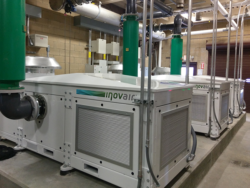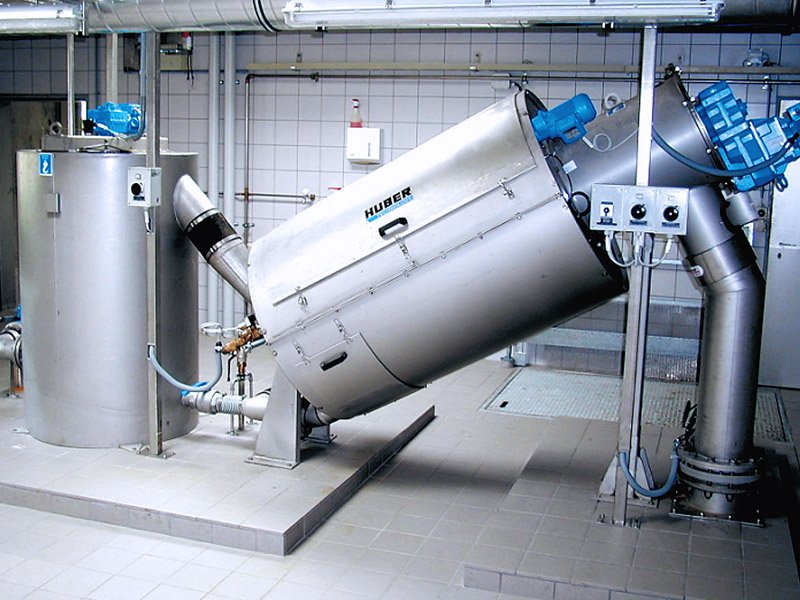
King County South Treatment Plant

Situated in Renton, Washington, the King County South Treatment Plant is a cornerstone of environmental stewardship and public health for the region. Managed by the King County Department of Natural Resources and Parks, this facility handles wastewater treatment for a substantial population within the greater Seattle area. The South Plant not only ensures that wastewater is treated to high environmental standards, but it also plays a crucial role in fostering community engagement and supporting sustainability initiatives.
Serving a Growing Population
The King County South Treatment Plant serves an expansive area that includes much of south and east King County, extending even into parts of Pierce County. As such, it tackles the wastewater needs of over 700,000 residents, which translates to a significant demand for efficient and effective wastewater management. Given the region’s ongoing growth and urban development, the plant’s role is increasingly pivotal in maintaining environmental and public health standards.
Wastewater Volume and Treatment Capacity
The plant was originally constructed in 1965 and has undergone multiple upgrades to keep pace with increasing demands and stringent environmental standards. Currently, the South Treatment Plant has an average treatment capacity of 115 million gallons per day (MGD) and can manage peak flows of up to 325 MGD during heavy rain events, thanks to its advanced combined sewer overflow (CSO) systems. This impressive capacity ensures that even during extreme weather conditions, the plant can effectively manage the increased volume of wastewater.
Wastewater enters the treatment plant from a vast and complex network of sewer pipes, pumping stations, and interceptors. Once it arrives, it undergoes multiple stages of treatment including primary, secondary, and advanced treatment processes. The primary treatment involves the physical removal of large solids and debris, while secondary treatment utilizes biological processes to break down organic matter. Advanced treatment stages may include nutrient removal and disinfection processes to ensure that the effluent released into Puget Sound meets stringent water quality standards.
Recent Local News
One of the significant recent developments involving the King County South Treatment Plant was its role during the record-breaking rainfall events experienced in late 2022 and early 2023. These heavy rainfalls tested the plant’s capacity and infrastructure, proving its resilience and efficiency in handling substantial volumes of stormwater and wastewater without major incidents.
Additionally, the plant has received regional attention for its energy efficiency initiatives. In 2021, the plant celebrated the achievement of generating over 60% of its operational energy needs through the cogeneration process. This process involves capturing methane produced during wastewater treatment and using it to generate electricity and heat, thereby minimizing reliance on external energy supplies and reducing greenhouse gas emissions.
Key Projects
Brightwater Treatment Expansion
One of the most critical projects currently affecting the King County South Treatment Plant is the Brightwater Treatment Expansion. While primarily a separate facility, the Brightwater plant project directly impacts South Plant by reducing the overall stress on its capacity. The initiative aims to balance wastewater loads across multiple treatment plants in the region, ensuring that no single plant becomes overwhelmed as the population continues to grow.
Nutrient Removal Pilot Project
Responding to the growing concern over nutrient pollution in aquatic ecosystems, the South Treatment Plant has launched a pilot project focusing on advanced nutrient removal. Excessive nutrients like nitrogen and phosphorus can lead to eutrophication, adversely affecting aquatic life and water quality. The initiative aims to test cutting-edge technologies and methodologies for more efficient nutrient removal, with the goal of implementing these solutions on a larger scale across King County’s wastewater treatment facilities.
Infrastructure Upgrades
The plant is also in the midst of significant infrastructure upgrades, a multi-year project designed to replace aging equipment and expand treatment capacities. These upgrades encompass everything from pump replacements and pipe refurbishments to control system optimizations. With an investment of over $200 million, this initiative is one of the most ambitious in the plant’s history and aims to future-proof its operations for decades to come.
Community Engagement
Public Tours and Educational Programs
Community engagement is an integral part of the South Treatment Plant’s mission. The facility offers public tours to educate residents about the intricacies of wastewater treatment and the importance of sustainable water management. These tours are tailored to various age groups, from school children to professionals in the field, making complex processes accessible and understandable to all.
Additionally, the plant organizes educational workshops in collaboration with local schools and environmental organizations. These workshops cover a range of topics, including water conservation, the science behind wastewater treatment, and the impact of pollution on aquatic ecosystems. By fostering a better understanding of these issues, the plant aims to cultivate a community that is well-informed and actively involved in environmental stewardship.
Community Advisory Committee
The South Treatment Plant also has a Community Advisory Committee (CAC), made up of local residents, environmental advocates, and business representatives. This committee provides a forum for direct communication between the plant management and the public, ensuring that community concerns and suggestions are heard and addressed. The CAC has been instrumental in shaping many of the plant’s policies and initiatives, particularly those related to odor control, noise reduction, and traffic management during construction projects.
Public Input and Transparent Reporting
Transparency is a cornerstone of the plant’s community engagement efforts. The facility regularly publishes detailed reports on its performance metrics, environmental impact, and progress on key projects. Public input is actively sought through town hall meetings, online surveys, and public comment periods, ensuring that the community has a voice in the plant’s operations and future planning.
Volunteer Programs
The plant also supports various volunteer programs aimed at enhancing community involvement in environmental protection efforts. One such program is the regular clean-up events organized along the shorelines and riverbanks affected by the plant’s operations. Volunteers from local communities, schools, and businesses come together to remove litter and invasive species, improving the habitats for local wildlife and enhancing the natural beauty of the area.
Environmental and Economic Impact
Reducing Carbon Footprint
The South Treatment Plant’s energy efficiency and cogeneration initiatives have significantly reduced its carbon footprint. By harnessing biogas to generate power, the plant has not only cut down on operational costs but also minimized its dependence on fossil fuels. This move aligns with King County’s broader goals of reducing greenhouse gas emissions and promoting renewable energy sources.
Water Reclamation
One of the lesser-known but equally important initiatives at the South Treatment Plant is its water reclamation program. Treated effluent is further purified and repurposed for irrigation, industrial processes, and even replenishing local wetlands. This initiative not only conserves potable water but also provides a reliable water source for various non-drinking purposes, thereby relieving some of the pressure on the region’s freshwater supplies.
Economic Contributions
The South Treatment Plant also plays a vital role in the local economy. It provides numerous high-quality jobs, from engineers and biologists to maintenance workers and administrative staff. Moreover, the extensive network of contractors and suppliers involved in the plant’s operations and projects supports countless additional jobs in the region. The plant’s commitment to sustainable practices has also positioned King County as a leader in environmental technology and innovation, attracting further investments and skilled professionals to the area.
Challenges and Future Outlook
Climate Change Adaptation
One of the significant challenges facing the King County South Treatment Plant is adapting to climate change. Increased rainfall and storm intensity pose risks to the plant’s infrastructure and operational capacity. In response, the plant is investing in climate resilience projects, including upgrading stormwater management systems and enhancing flood defenses. These measures are designed to ensure that the plant can continue to operate efficiently even under increasingly variable and extreme weather conditions.
Regulatory Compliance
The plant must also continuously navigate a complex and evolving regulatory landscape. Environmental standards are becoming more stringent, particularly regarding nutrient discharge limits and greenhouse gas emissions. The plant’s proactive approach to innovation and infrastructure upgrades positions it well to meet these future regulatory challenges, but ongoing investment and vigilance will be required.
Community Relations
Maintaining strong community relations remains a priority. As the plant undertakes significant infrastructure upgrades, it must manage the associated disruptions, such as construction noise and traffic. Effective communication and community engagement will be critical in mitigating these impacts and maintaining public support for the plant’s essential work.
Conclusion
The King County South Treatment Plant is more than just a wastewater treatment facility; it is a vital component of the region’s environmental and public health infrastructure. Through its advanced treatment processes, sustainability initiatives, and robust community engagement programs, the plant sets the standard for effective and responsible wastewater management. As the region continues to grow and face new environmental challenges, the South Treatment Plant’s commitment to innovation and community involvement ensures that it will continue to be a pillar of sustainable development for King County and beyond.


